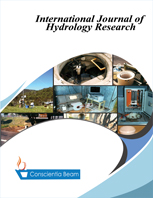Study of Heavy Metals Variability and their Effect on Plant Growth in Kanzenze River of Upper Akagera Catchment, Rwanda
DOI:
https://doi.org/10.18488/journal.108.2020.51.32.45Abstract
Agricultural swamps are among the major fruitful and exposed to heavy metals deposition and contributes to ecological concerns. Heavy metals are mainly pollutants to deteriorate water quality and affect plant health through leaching and seepage process from industrial services, anthropogenic activities, erosion and mining activities. The study aimed to assess heavy metals, water quality and their effect on plant growth along Kanzenze Swamp of the Akagera Upper Catchment. The total of Sixteen chemical parameters of water including Calcium, Magnesium, Sodium, Potassium, Copper, Zinc, Manganese, Lead, Cadmium, Chromium, pH, Electrical Conductivity, Sodium Adsorption Ratio, Magnesium hazards, Kelly Index and Soluble Sodium Percent were analyzed and observed values were thereafter compared with international standards values recommended by Food and Agriculture Organization. Photometric methods and Atomic Adsorption Spectrometer machines were used to detect the heavy metals while analytical. Descriptive analysis and Principal Components Analysis techniques were used to correlate water quality parameters for similarities and dissimilarities through cluster analysis. All statistical analysis were performed by using Statistical Package for Social Science version 22.0. The study findings shows that most water use for irrigation is polluted by heavy metals with maximum values compared to Rwanda national and international permissible standards for irrigation. The heavy metals with highest content included Calcium, Magnesium, Potassium, Copper, Manganese, Cadmium and Chromium. Hence farmers relaying on this water may be disposed to health hazards issues and other environmental concerns. Therefore some effective measures like water treatments are compulsory vital needed to boost the quality of water for irrigation purpose.

